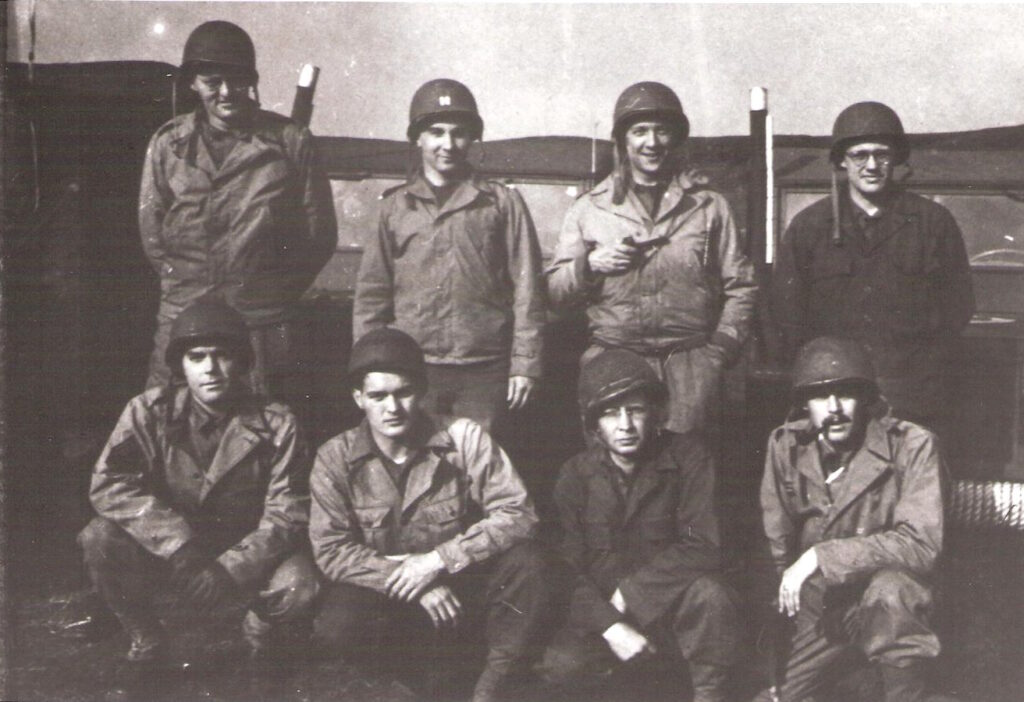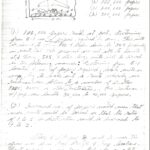
Colonel (Ret) William “Bill” McNamara
March 25, 1921 – June 4, 2016
In 1936, William “Bill” McNamara joined the Washington National Guard’s 24th Calvary Division at age 15. Little did he know, this would be the beginning of a whirlwind career that would span not only decades but continents. McNamara and his unit were sent to Europe in 1943. McNamara became involved with the Stars and Stripes soon after, a position that would ultimately lead him to the beaches of Normandy.
THE STARS AND STRIPES INVASION PLAN
By Colonel (Ret) William McNamara
On May 1, 1944 I was in London, England, enduring German air raids, and serving as S&S Administration Officer at our Headquarters at 37 Upper Brooke Street. At that time, we had two editions — London and Belfast, North Ireland.
As a 23-year-old Captain, I had complete jurisdiction over Supply, transportation, Help Wanted (B-bag), and the College Registration and War Orphan programs.
A week later our Commanding Officer, Lieutenant Colonel Ensley M. Lewellyn, called me into his office and advised me he had just come from a meeting at ETOUSA Headquarters, where he learned that the invasion was imminent and he had persuaded Headquarters to include a contingent of Stars & Stripers. He continued: “I would give my right arm to lead them, but Headquarters said I am too valuable. So you are it”.
Next day he selected two other officers and 33 enlisted men, including Tec 4 Andrew A. Rooney. This group included a mix of editorial, mechanical and circulation personnel. He then decided I would lead the first wave (6 men), 1st Lieutenant Earl Mazo, the 2nd; 2nd Lieutenant Herbert A. Palmer, the 3rd; and the senior Sgt. The 4th. Each wave would come 7 days apart. If the 1st group was killed, later groups would try to accomplish our mission, which was quite simple:
- We would take along a radio, to get BBC newscasts, a mimeograph machine & a supply of paper with pre-printed S&S masthead.
- We would print & distribute 1 page of news flashes, until he could arrange for daily shipments to us of the London edition.
- Start a Continental edition as soon as possible.
On May 22nd orders came assigning the group to Headquarters advanced Sec. COM-Z for duty w/Special Services (Stars & Stripes) Group. With this came the realization that the invasion was for real.
The next two weeks were a bedlam. The group had to draw field clothing, be armed, equipped, supplied and vehicles requisitioned before we left London. All these while the two daily editions got out.
By June 1st we were all at the marshaling area at Bristol, frantically trying to make final preparations and keep from getting lost among the hundreds of regiments and divisions.
While there, I was ordered to report to the Commanding General, advance Sec., COM-Z. The General berated me for not submitting my group’s invasion plan. I was unaware of such a requirement. He insisted everyone must submit one. I replied, “If someone briefs me on what’s going to happen, then I can”. He turned to his G-2 and asked why I had not been briefed. The Colonel replied: “He is not bigoted”. I had no idea what that was, but it seemed to be a problem. In dismissing me, the General said, “You must submit a plan”.

I called my group together and briefed them on my problem. One observed that mail is so important to the troops that every unit will try to send a daily messenger to the APO. All agreed. So it was decided that we set up next to one. My vehicle was already packed for movement to the POE and all we could find was gray-lined tablet and a pencil. So I drew some wavy lines, to depict the channel, and drew a crude, child-like house with a pole and APO flag. Below that was our plan:
- We would set up next to an APO. Publish a daily “Beachhead Bulletin” and give copies to mail messengers.
- We would set up a circulation system as soon as we started receiving copies of the London Edition.
- We would start a continental edition as soon as a workable press is found.
This was delivered to an incredulous Colonel at Headquarters who reluctantly accepted it.
Colonel Llewellyn came down from London on D-Day eve to give us a pep talk. I’ll never forget his final words: “Some of you will probably not come back alive, but you will have a ring side seat on the biggest show in the history of the world and be able to render a great service to our fighting troops. I really envy you.”

Next day, D-Day, my 1st detachment was alerted to move out on a minutes notice. Orders arrived at 4:00 P.M. that day. I assembled my 6 men, 3 jeeps and 1 weapons carrier and we headed out that night. We drove at 10 MPH in total darkness because all roads were clogged with troops and equipment. Everyone rode in silence, their minds on home and loved ones.
We arrived at our POE in Plymouth early morning of D+2 and within a few hours were loaded aboard a Liberty Ship. We sailed that night and were standing off Omaha Beach the morning of D+3. We finally got ashore on D+5 and commenced implementing our plan.
By V-E Day (May 1945) the European edition had grown from a 5,000 circulation weekly in 1942 to a chain of five editions with a daily circulation of over 500,000 eight pagers.
Shortly after V-E Day, I was ordered to report to ETOUSA Headquarters. In the Majestic Hotel in Paris. There, a Colonel handed me our Stars & Stripes Invasion Plan, with added red “SECRET” stamps.
He said, “I thought you might like to keep this as a souvenir. You are the only unit in the entire invasion forces that did exactly what you said you were going to do and exactly as you said you were going to do it.”
I donated the original plan to the Stars & Stripes Museum in Bloomfield, Missouri, where it is now on display.
LEARN MORE
Defense Media Activity Article: Former Stripes awarded French Legion of Honor
KFVS-12 Story: Museums in the Heartland honor D-Day veterans
The Connection Newspaper Article: Alexandria: WWII Veteran Dies at 95, Bill McNamara survived Normandy invasion
Stars and Stripes Article: Chateau Vouilly: The hideaway where war correspondents chronicled the aftermath of D-Day




